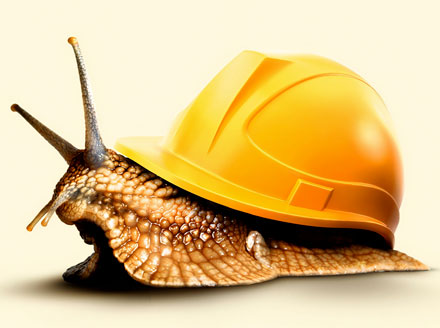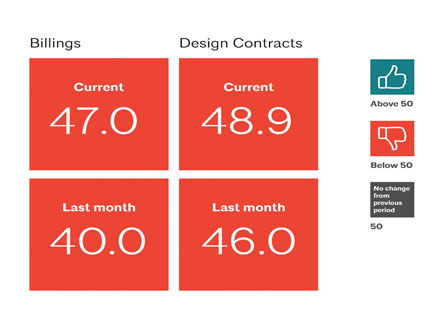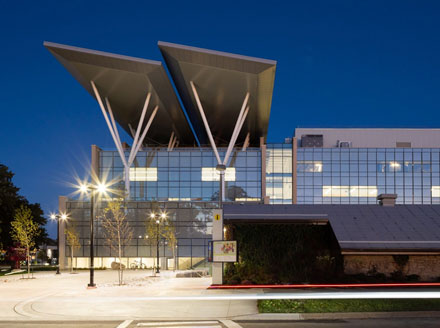Share This Post:

Image Credit: Daniel McCullough
ABI Score For May 2020 Is Still Bleak
ABI May 2020
This is post 6 of 7 in the series ABI Monthly Updates
This is post 6 of 7 in the series
ABI Monthly Updates
WORLD NEWS | Carolyn Feinstein | June 24, 2020
WORLD NEWS | Carolyn Feinstein
June 24, 2020
Let's start with the good news: It's not quite as bad as April 2020. Now the bad news: The Architectural Billings Index (ABI) for the month of May 2020 is still considered "extremely poor for the third consecutive month" by the AIA.
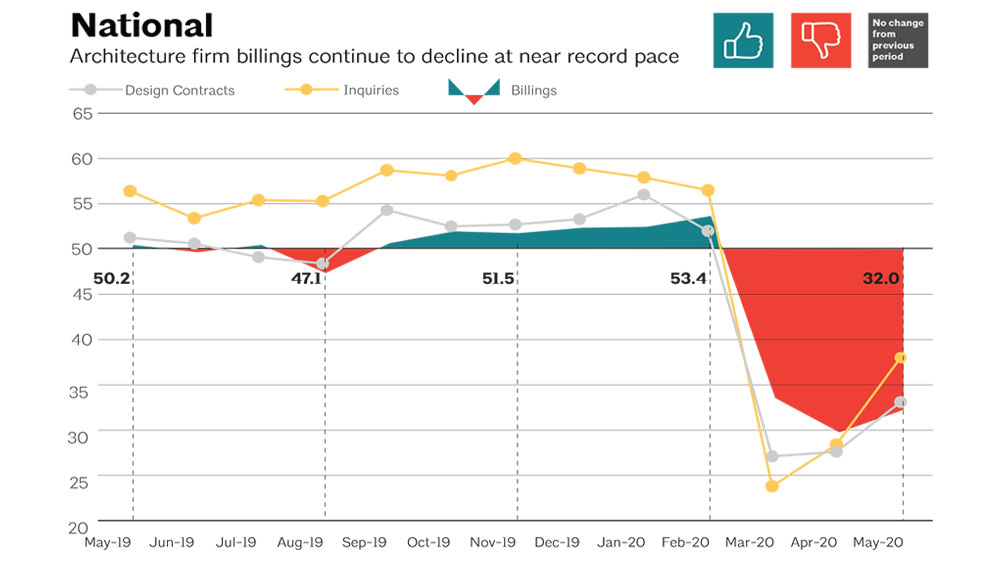
Image Credit: AIA
The May 2020 ABI, across the U.S., averages out to 32.0, as compared to the April score of 29.5. The score seems encouraging, but is misleadingly positive if you skip past the regional business conditions. All U.S. regions, with the exception of the Northeast, experienced a drop in the ABI score for the month of May. The Northeast region, which reported an April score of only 23.0, made a mild recovery to 25.1 for May. The Midwest region fell from an April score of 31.2 to 29.7 in May. The South and West regions reported 31.1 and 38.1 respectively for the month of April. For May, the South hit a lower ABI score of 30.6 and the West, 36.0.
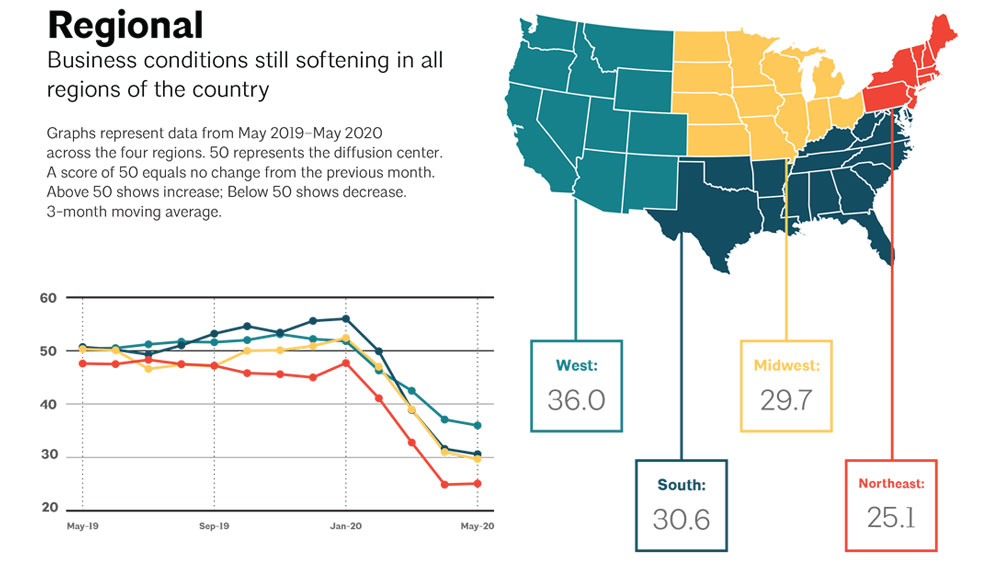
Image Credit: AIA
The National Bureau of Economic Research has determined that in February of this year, the U.S. entered the beginning of a recession due to the COVID-19 outbreak. Although the economy overall has slowed throughout the U.S., regional economic conditions are seeing mixed data in terms of declines and rebounds. In Dallas, the home sales that had initial suffered a sharp decrease have now started to rebound. The economy appeared to be trying to make a modest recovery during the month of May, but increased infection and hospitalization rates during the month of June may have a negative net impact on these numbers.
The unemployment rate fell to 13.3% in May, compared to a rate of 14.7% in April. The U.S. added 2.5 million new positions to the nonfarm payroll during the month. Considering we lost 20.5 million nonfarm positions in April, this is only mildly positive news. The construction sector, which fell by 975,000 in April, added 464,000 new jobs in May, more than a third of which were specialty trade contractors (325,000). Although the Bureau of Labor Statistics reported an increase of 7,000 jobs as of June 5, 2020 for the architectural and engineering sector, the architectural sector specifically, is reporting an net loss of 10,600 positions in the month of April (remember these numbers are one month behind).
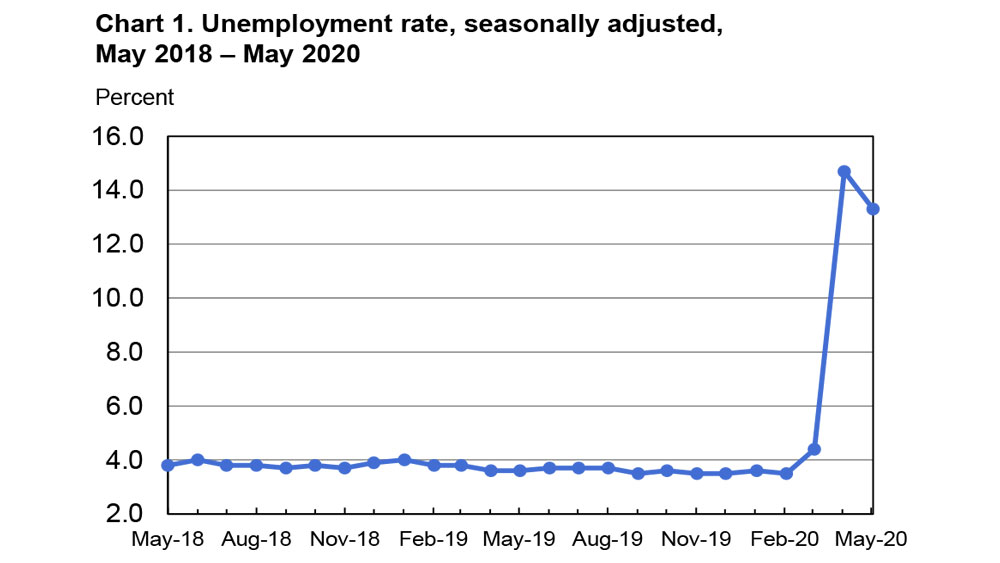
Image Credit: Bureau of Labor Statistics
Architectural firms that responded to the monthly AIA survey have reported a mix of positive and negative impacts, experienced since the pandemic began in February. Though over 20% of firms are reporting a decrease in productivity, and 17% are finding it more difficult to manage or monitor their employees, positive changes have also been noted. Twenty-nine percent of firms are experiencing more empathy toward the personal situations of their staff, and 18% of firms are reporting their staff has increased their digital proficiency. A forced transition to a different or new work environment will never be without its flaws, but there is some hope here that this unexpected shift to a remote workforce will provide firms and their employees with the option to continue space-saving, cost-saving, and time-saving practices beyond the scope of the pandemic.
The long term outlook for architecture firms is still uncertain. Many of the positions currently held at firms may be supported by PPP funds, which can only temporary bridge the gap between receipts and expenses. Weathering the storm will be difficult and largely dependent on the recovery of other closely related employment sectors.
Hold tight everybody. This storm is far from over, but perhaps the May numbers are at least a sign the water has begun to recede.




